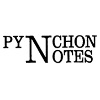Abstract
The possible relevance of the unusual names Oedipa, Thurn and Taxis, and Pierce Inverarity to themes in The Crying of Lot 49 has intrigued Pynchon critics since the novel's publication. Oedipa's name, many agree, points to her role as a solver of riddles, after Oedipus, who answered the riddle of the Sphinx. The historical postal family Thurn and Taxis has been investigated, but nothing particularly significant about the name itself has been found. Regarding a Pierce/Peirce link, in "a novel so concerned with signs and the processes of signification," John Johnston observes, "Pierce's name evokes the name of the American founder of semiotics, C. S. Peirce" (52, 56). In fact, evidence suggests that all three names are linked to one another through C. S. Peirce (1839–1914) –not necessarily his semiotics, but his less well-known theory of self-organization. The way each name functions can be understood in relation to what I consider the main question of the novel: What is responsible for organization that emerges out of an essentially anarchic world, a world without a centralized source of direction?
How to Cite:
Alexander, V. N., (2003) “The Crying of Lot 49 and C. S. Peirce's Theory of Self-Organization”, Pynchon Notes , 23-39. doi: https://doi.org/10.16995/pn.50
Downloads:
Download PDF
762 Views
548 Downloads

